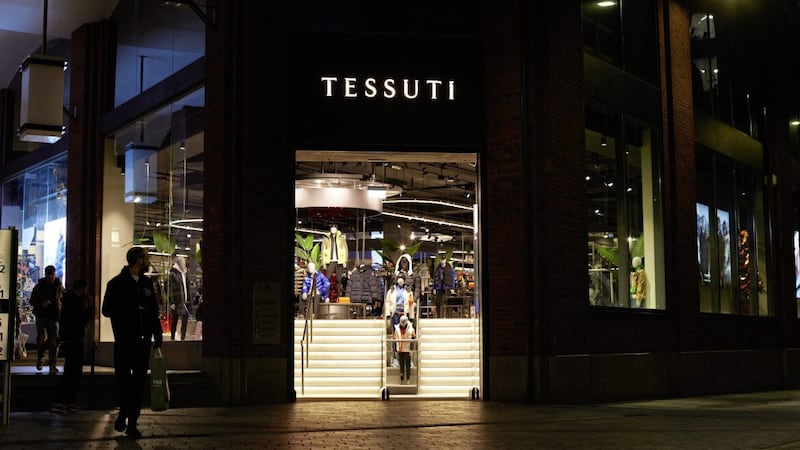THE leafy hillside and pristine gardens of Riddel Hall at Stranmillis in south Belfast reveal Queen’s University's new business school building. Nested within a crescent-shaped cluster of woodlands is the new red-bricked building which, at first glance, gives away little that this building could play an important role in our drive to make the country carbon-neutral.
Nothing visible suggests a pioneering geothermal energy project looking at the front of the new building’s historical lawn and buxus hedges.
Yet under the green lawns are 40 x 125 metre boreholes which are drilled into the Sherwood sandstone formation with approximately 10km of collector pipework fitted that feeds the ground source heat pump system for the 6500 sq metre building. The heat is harnessed from within the Sherwood sandstone formation which runs under large parts of Belfast and elsewhere across the Northern Ireland.
Academic research and also geoscientific survey work by the Geological Survey of Northern Ireland (GSNI) shows that this Sherwood sandstone formation is an important resource for harnessing and storing renewable heating and cooling.
Perhaps what the opening of the new business school shows is that repurposing and reworking this natural resource for heating (and cooling) networks can be a key piece of the puzzle of how to decarbonise our buildings. We know that in places such as Saclay, a suburb in southwest Paris, the next generation of geothermal district heating networks are being installed.
A visit to the business school helps to demystify the nature of geothermal energy. Upon entering the new building, you immediately feel a comfortable ambient temperature. Any niggling doubts dissolve away when the heat comforts you. The business school can play an important role in bridging between basic geothermal knowledge and awareness on the one hand, and industrial application and domestic adoption in community heat networks on the other.
Making the energy transition happen will require buildings to be a pivotal part of the environmental decarbonisation puzzle and we know from research that heat accounts for just over half of final energy consumption, with around a third on transport and power making up the total.
For instilling that all-important confidence, the building serves as a ‘show me geothermal working’ for new build project developments and business model cases.
As Professor Ravishankar, dean and head of Queen’s Business School, noted: “Our new building serves as a national geothermal energy flagship, highlighting our pioneering approach to technology adoption and our commitment to environmental decarbonisation.
“Importantly, it demonstrates these principles through tangible actions that resonate with our future business leaders, the students. Our building has no carbon emissions, as we have eliminated the use of fossil-fuel operating boilers.”
As new legislation is introduced by the UK government aimed at targeting so-called ‘greenwashing’ evidencing the net zero transition actions will become much more prominent and significant.
Opportunity is where you find it, says an old proverb. You might ask where you can find and unlock natural resource opportunities? Well, there is an abundance of natural resources all around us, and harnessing those with technologies, business innovation, and communities can bring many benefits to our economy and society.
Rural and urban communities can organise themselves collaboratively and rethink their energy demands, perhaps forming community heat networks. As the UK Climate Change Commission report recently noted, decarbonising the built environment in Northern Ireland ‘remains at an early stage’. However, taking steps towards any journey often begins with a single step. As we see from wind and PV solar, this does not automatically mean an immediate transition or short-term savings, but long-term value creation and carbon reduction.
Amidst the present circumstances of climate change risks and threats, and the collective task of pursuing efforts to limit the temperature increase to 1.5?C above pre-industrial levels, there are opportunities to find, but also making opportunities.
This seemingly simple statement and target is hard to comprehend and puzzling for even the most clued-up climate data scientists. For most, the question is how net zero questions relate to the implementation of Sectoral Plans and Local Area Energy Plans. There is opportunity-making potentiality for thermal energy storage, including pit or aquifer, developing heat networks with the necessary flexibility to integrate renewable and waste-heat sources.
There are opportunity-making prospects when combining natural geothermal resources with digital solutions, predictive artificial intelligence in control systems, and matching heating and cooling production with demand, maximising efficiency. There are both opportunity-finding and opportunity-making ways to decarbonise the built environment.
Still, there remains much work to be done in building system readiness. Much to be done in building the confidence of stakeholders in managing change.
The Queen’s Business School is an accumulation of a great deal of hard work by the university estates team, and the contracted builders O’Hare & McGivern Ltd and partners. It is a remarkable building with the combined synergistic qualities of the BREEAM building standards and complementary PV solar and Swift bird bricks added into the mix.
The opening of the geothermal heated business school is only one single step. To build geothermal community projects and provide heat networks, the challenge may be bringing many steps into line such as geo-science data, drilling, mechanical, electrical, and plumbing operations, and ensuring that each part is marching in time and in the same direction.
This is a challenging task, as it involves building capacity steps including finance, law, planning, community engagement and collaboration, geothermal and heat network legislation, regulation and consumer protection as well as data generation and the fusion of data to inform behaviours and to help shape incentives to switch from carbon fossil fuel intensive activities. The new chapter awaits; so, do market-making opportunities and opportunity-making steps.
Professor Mark Palmer is Professor of Marketing and Strategic Management at Queen's University




